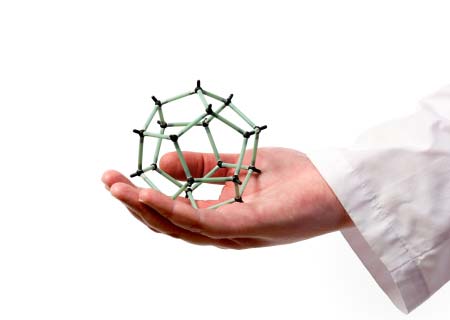In the past few years, wearable tech and mobile apps have been dominating the healthcare startup scene. Zephyr created the Anywhere Biopatch, an FDA-approved monitoring device that can be attached to a patient’s chest to monitor minute-by-minute vitals. And Pager launched an on-demand doctor service so that no one will have to wait in a lobby to see their primary care physician ever again.
But it’s another industry—nanotechnology—that is poised to enter the healthcare market in a big way. Nanoparticles used in life sciences research already generates $30 billion per year. Nanomachines will have a huge impact on healthcare, and everything from stem cell research to gene therapy is fair game.
Here are just 3 recent nanotechnologies at the forefront of the healthcare revolution:
1. Cell repair and healing
By studying the way specific cells in our body operate, scientists believe they can create nanomachines that replicate cell repair and healing.
White blood cells and fibroblasts, in particular, are model cells for nanomachines. White blood cells can identify a problem, move through the bloodstream to the target site, and break down harmful pathogens. Fibroblasts produce collagen essential to the healing process.
Cell repair nanomachines would be a crucial development for cells that don’t naturally heal or are difficult to repair, like nerve cells and heart cells. By repairing severed or damaged nerves, nanomachines could restore sight and mobility and repair the damage done by heart disease.
Another recent breakthrough in cell repair uses nanolasers in a process called scanning probe lithography (which creates a map for stem cells to grow into). Scientists have been able to coax stem cells to grow into bone tissue using this method, and believe they can eventually create molds for every other tissue type as well.
2. Cancer detection
Another huge development comes from Google X, which is developing a pill that could detect early-stage cancer.
The pill would release magnetic nanoparticles into the bloodstream that attach to cancer cells. When used along with a wearable sensor, a patient would be able to detect the presence of cancer cells as soon as they appear.
The non-invasive pill would have a huge impact on cancer prevention, and could save millions of lives each year. It would also cut down on multiple hospital visits, expensive MRIs, and stress on cancer patients.
3. Diabetes detection and treatment
One of the most promising use cases for healthcare nanotechnology comes in the form of a cost-effective test for Type 1 diabetes.
Nearly all diabetes tests require blood samples, and even the most “convenient” ones require patients to prick their fingers with a needle. The traditional test that determines whether a patient has Type 1 or Type 2 diabetes is expensive, and can only be performed in a clinical setting.
But researchers at MIT have created a “nanotechnology tattoo” with nanoparticle “ink” that can be used to track blood glucose levels. And on the other side of the country, researchers at the Stanford University School of Medicine have created a handheld plasmonic microchip that anyone can use to distinguish between the two types of diabetes. Both technologies would make cost-affordable early diabetes diagnosis and prevention a reality.
But it gets even better. Patients with Type 1 diabetes have damaged islet cells, which are normally responsible for secreting insulin and keeping blood sugar low. Another team of researchers at MIT has created injectable nanoparticles that can sense high blood glucose levels and respond by accurately secreting just the right amount of insulin.
What does the future hold?
Not all of these technologies are fully realized. And many other types of groundbreaking nanotechnologies, like gene therapy, may not see the light of day for another 10 to 20 years. It takes a long time (and a lot of money) for promising academic research to make its way into a startup’s hands.
But nanotechnology is the next frontier for medicine, and we are heading towards it with every passing day.
